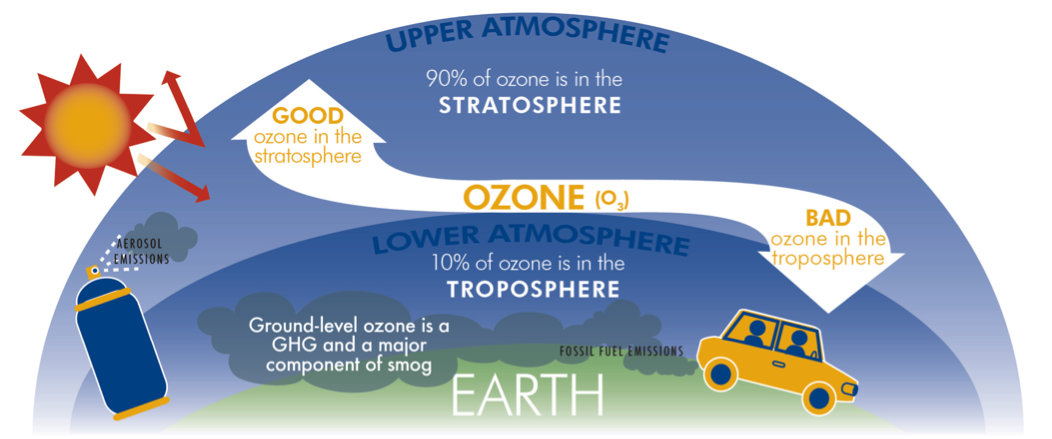Ozone Trends
Childpage navigation
Ozone (O3) is found throughout the atmosphere. However, the largest proportion (about 90%) is present in the stratosphere, in the so-called ozone layer, where it prevents harmful solar UV radiation from reaching the Earth’s surface (see below). Due to its importance for human and ecological health, ozone has been monitored from the ground for nearly a century; the Arosa record in Switzerland is the longest ozone measurement in the world (external page Staehelin et al., 2018).
The anthropogenic release of ozone depleting substances (ODSs) since the 1970’s has caused stratospheric ozone depletion. However, the Montreal Protocol helped to strongly reduce the emissions of these species and stratospheric ozone is now slowly recovering in the upper stratosphere, with model projections indicating it should recover to previous levels by the middle of the 21st century in most regions. Besides ODSs, several other factors also impact stratospheric ozone, such as large volcanic eruptions, climate variability, and long-term climate change, which affects circulation patterns and thus transport of ozone.
The remaining 10 % of ozone is found in the troposphere. Here, ozone is a pollutant, which has significant negative impacts on human health, crop yields, and visibility. Tropospheric ozone is also an important greenhouse gas contributing to global warming. Most tropospheric ozone is formed in situ from gaseous precursor species, but a small proportion (about 10 %) is transported downwards from the stratosphere. Tropospheric ozone has increased globally as emissions of precursor species, such as carbon monoxide, nitrogen oxides, and hydrocarbons, have increased significantly in many regions. Air quality control measures have, however, helped to reduce these emissions in certain regions (e.g. Europe), and air pollution policy will continue to play a significant role in the evolution of tropospheric ozone in the coming decades (external page Staehelin et al., 2017).

Current and Recent Research Projects
- Why has European free tropospheric ozone not decreased as expected?
- The changing Ozone Depleting Potential (ODP) of N2O in a changing climate
- Understanding tropospheric ozone changes in the 21st century
- Vertical changes in ozone in the stratosphere over the past three decades
- The Overlooked Role of Stratospheric Ozone in forcing Northern Hemispheric climate (TORSO)